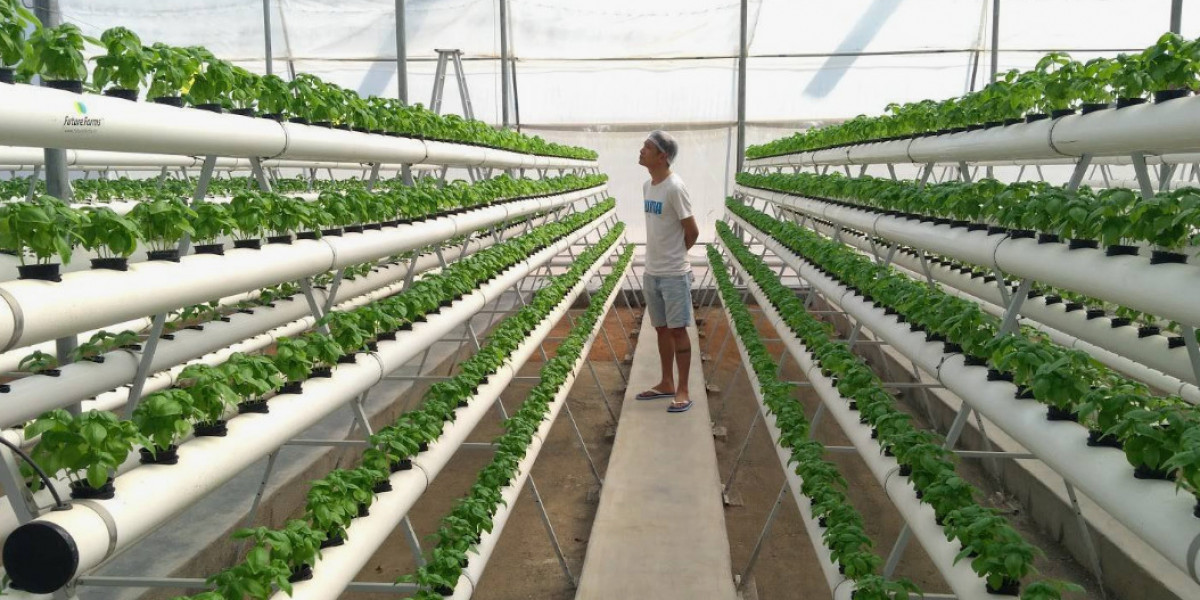The hydroponics market has seen rapid growth in recent years as a sustainable and efficient farming method. With increasing concerns over food security, climate change, and limited arable land, hydroponic farming is emerging as a viable alternative to traditional agriculture. This article explores global trends in the hydroponics market, key growth drivers, technological advancements, and future opportunities shaping the industry.
Rising Popularity of Hydroponics Worldwide
Hydroponic farming has gained significant traction across North America, Europe, and Asia-Pacific due to its ability to produce high-yield crops with minimal water and space. Countries like the United States, the Netherlands, and China are at the forefront of adopting hydroponic farming to meet the rising demand for fresh, pesticide-free produce. The growing trend of urban farming and vertical farming in metropolitan areas further boosts the hydroponics industry.
Key Market Drivers and Growth Factors
Several factors contribute to the rapid growth of the hydroponics market:
- Water and Resource Efficiency Hydroponic systems use up to 90% less water than traditional soil-based farming, making them ideal for water-scarce regions.
- Increasing Population and Food Security With the global population expected to reach 9.7 billion by 2050, hydroponics can help meet the growing food demand sustainably.
- Technological Advancements The integration of AI, IoT, and automation in hydroponic farms has enhanced efficiency and crop yields.
- Government Initiatives and Investments Many governments and private investors are supporting hydroponic farming to promote sustainable agriculture and reduce carbon footprints.
- Rising Demand for Organic and Locally Grown Food Consumers are increasingly opting for pesticide-free, organic produce, which hydroponics efficiently provides.
Technological Innovations in Hydroponics
Advancements in technology are playing a pivotal role in the evolution of hydroponic farming. Some key innovations include:
- Automated Nutrient Delivery Systems AI-driven nutrient delivery ensures optimal plant growth by monitoring pH levels, EC, and moisture.
- LED Grow Lights Energy-efficient LED lights enhance plant growth by providing tailored light spectrums.
- Vertical Farming Multi-layered hydroponic farms maximize space utilization in urban areas.
- Smart Sensors and IoT Integration Real-time monitoring of environmental conditions optimizes crop production.
Challenges and Market Restraints
Despite its numerous benefits, the hydroponics market faces some challenges:
- High Initial Setup Costs The investment required for setting up hydroponic farms, including infrastructure and technology, is substantial.
- Technical Expertise Farmers need specialized knowledge to manage nutrient solutions and maintain optimal growth conditions.
- Electricity Dependency Hydroponic systems rely on artificial lighting and automated systems, leading to high energy consumption.
Future Outlook and Growth Opportunities
The hydroponics market is expected to witness significant growth in the coming years due to the following:
- Expansion of Urban and Smart Farming The rise of smart cities will drive demand for hydroponic farms integrated into urban infrastructure.
- Sustainable Food Production As sustainability becomes a priority, hydroponics will play a crucial role in reducing carbon emissions and minimizing land use.
- Investment in Research and Development Ongoing RD efforts will further optimize hydroponic techniques, making them more accessible and cost-effective.
Conclusion
The hydroponics market is poised for exponential growth as global agricultural practices shift towards sustainability and efficiency. With increasing investments, technological advancements, and a growing preference for fresh, locally sourced food, hydroponic farming is set to revolutionize the future of agriculture.







